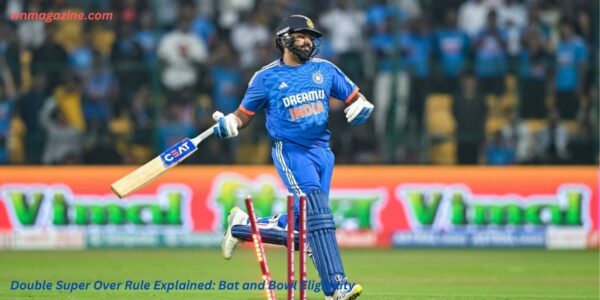Double Super Over Rule Explained: Bat and Bowl Eligibility
2 min read
Double Super Over Rule Explained: Bat and Bowl Eligibility

Double Super Over Rule Explained: Bat and Bowl Eligibility
The India vs Afghanistan T20I match defied the notion that dead rubbers are boring, delivering an unprecedented and thrilling double super over finish. In a historic first for international cricket, both teams scored 212 runs in the initial 20 overs and 16 more in the first super over, resulting in a deadlock. To break the tie, a second super over was called for, leading to a controversial and dramatic sequence of events that eventually saw India emerge victorious.
See also : wellhealth how to build muscle tag
The match echoed the cricket boundary count rule introduced after the 2019 World Cup final between New Zealand and England, and it escalated to the double super over scenario. Notably, the same bowler cannot bowl the second super over, as demonstrated by the exclusion of Azmatullah Omarzai and Mukesh Kumar, who had already bowled in the first super over.
The same bowler can not bowl the 2nd one Super Over.
A key rule stipulates that a bowler who participated in the first super over is not eligible to bowl in the second, explaining the absence of Azmatullah Omarzai and Mukesh Kumar in the second super over. Both had delivered exceptional performances in the initial super over, restricting the opposition to 16 runs.
What’s with the batting passed?
In terms of batting, the team that batted second in the original 20 overs must bat first in the super over. This rule applied to Afghanistan, who batted first in the super over after matching India’s score of 212/4 with 212/6. Consequently, India, having batted second in the original innings, took the first innings in the second super over.
If the bowler cannot bowl, but the batter can bat
Another rule dictated that a batter dismissed in the first super over cannot bat in the second. However, if a batter was listed but did not bat or was not dismissed, they remain eligible for the second super over. If a player is retired hurt, they also retain the right to have another turn.
Also Read: well health tips in hindi wellhealth
Conclusion
The article concludes with the acknowledgement that the evolving nature of cricket might bring more surprises, as witnessed in the double super over spectacle. While the world is yet to see a triple super over, the dynamic nature of the sport leaves room for such possibilities in the future, albeit rare. The article reflects on the unpredictability of cricket and the potential for further innovations in the game.